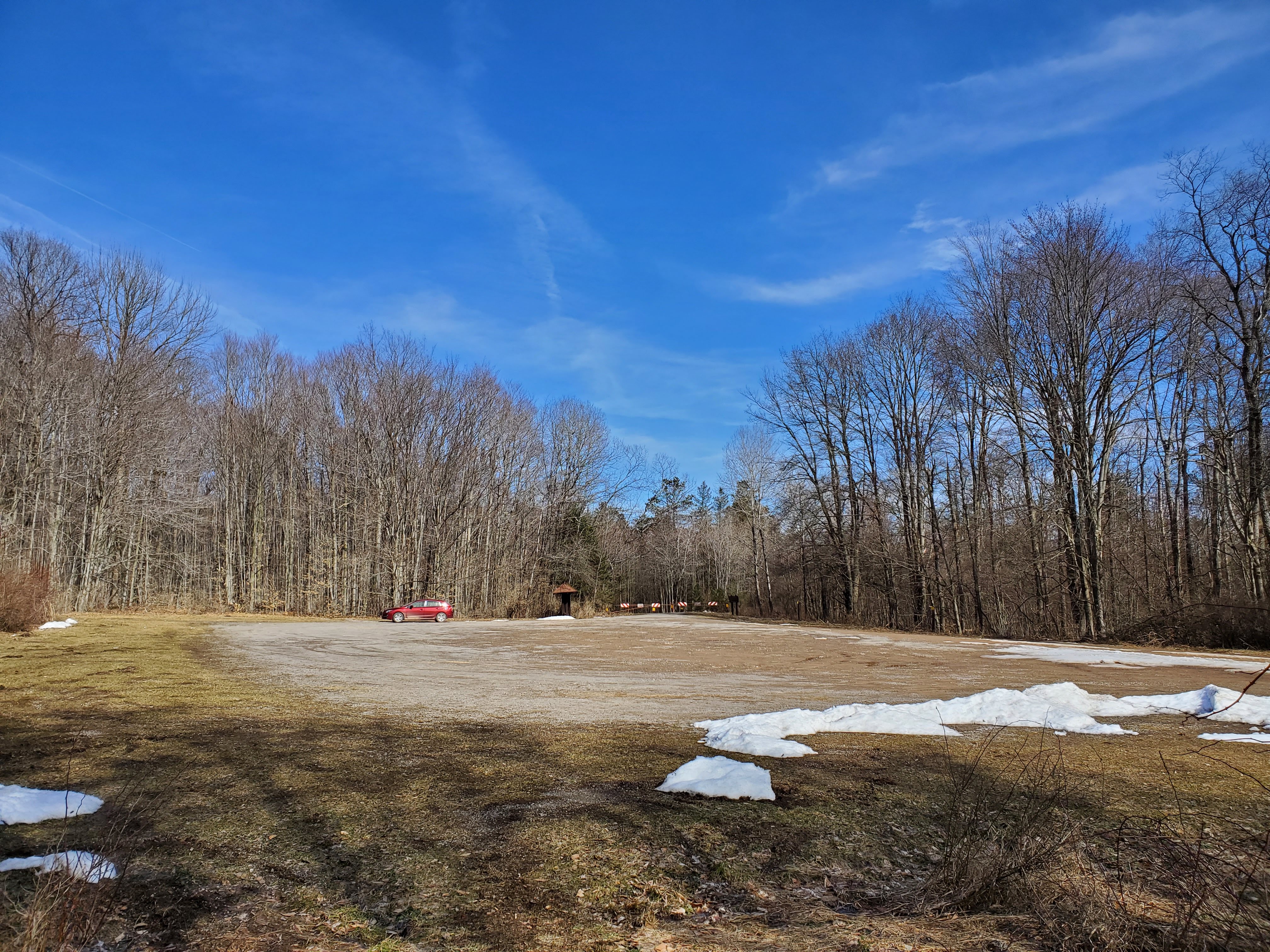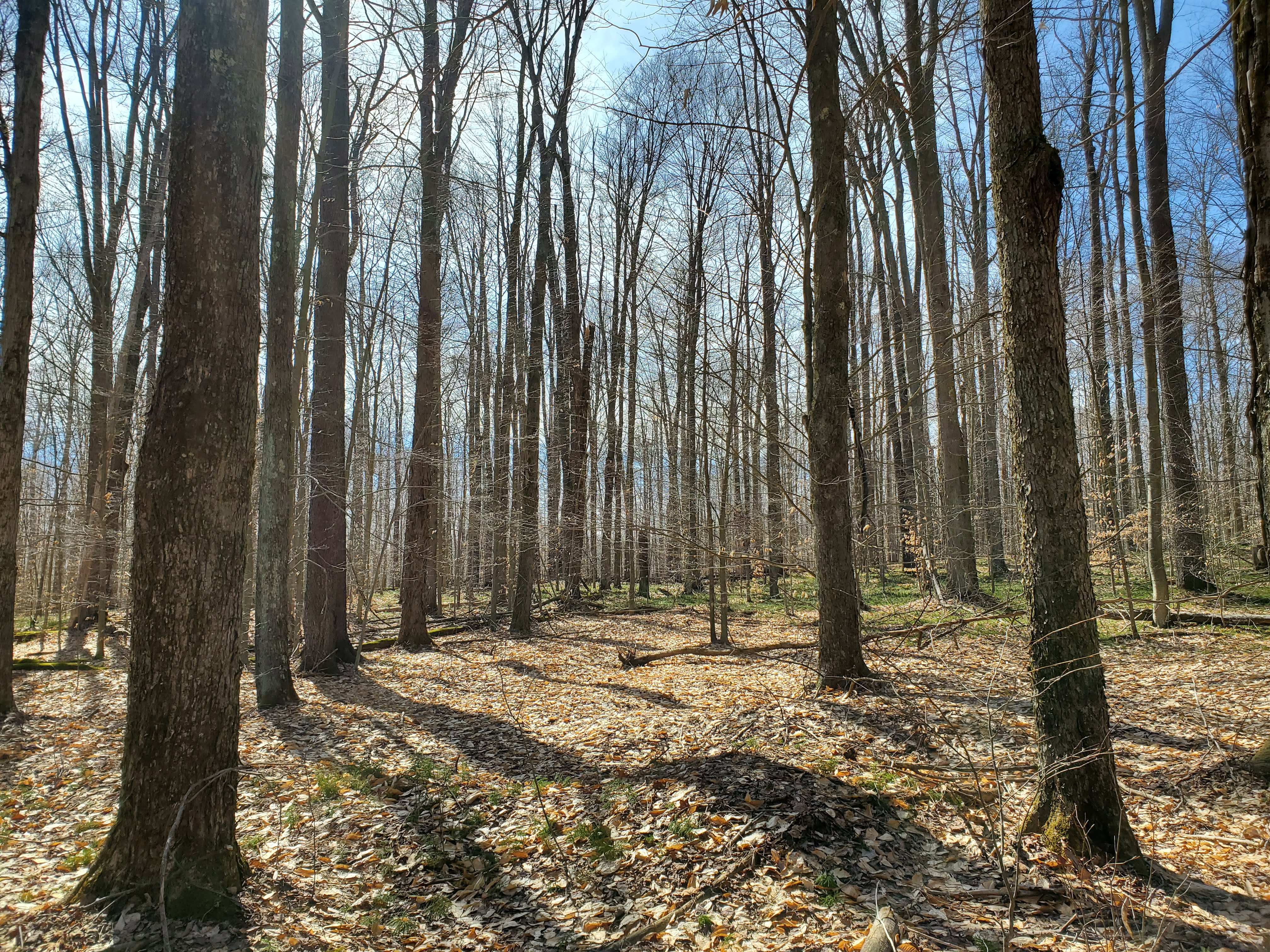In the Woods

Cabin near Cook Forest State Park
We left Wallingford for Cook Forest State Park at 9:30 am and arrived at the cabin around 4:00 pm. Soon after we arrived, I removed the Biden/Harris sticker taped to the inside of the rear window. We had decided to drive off the interstate, and for the last hour of the trip, every few miles we had seen a house with a large Trump sign in the front yard, although the election had occurred four months ago, and Biden had been sworn in six weeks ago. We saw Confederate battle flags raised on flagpoles in a state where the flag had never flown during the Civil War. There were no Biden signs.
From the appearance of the houses along the road, the residents were not prosperous. The well-off lived in small ranch houses with tin roofs—mostly dark red, but a few were green, brown, and blue. Every few miles, we saw a well-maintained multistory house. I imagined monied outsiders living in these. Mostly, though, we saw mobile homes set on concrete blocks and ramshackle shacks. No one was out—not even children—and no pets were in the yards.
Winter was over, but spring was still a few weeks away. A few patches of snow thrived in the shade. The bare trees were dark brown, set off against the yellow-gray of the grass. The only relief from the brown and gray was the dark green of pines and spruces and white leaves fluttering on the fine limbs of beech trees.
We spent most of our time in the cabin, which had been newly constructed in 2020. It had the key comforts of home: a gas-burning stove, queen-sized beds, running water, a fully equipped bathroom, and a fireplace, which we used each night. We passed our time as we passed it at home: I cooked, we looked at screens, we read. What was different from our usual routine was the afternoon hikes (on each day but one) and the occasional board game in the evening.
My older son and his wife drove in on Saturday and spent most of the day with us. We packed lunches and took a hike up one of the ridges to the Forest Cathedral Natural Area in the park. As we walked across the top, we stopped near two large rocks and ate our peanut butter sandwiches and fruit in the sun. The flyer told us that this ridge is prized for its “stands of old-growth forest.” It’s one of the few areas where the trees haven’t been harvested by the forestry industry. Much of the remainder of the park—and all of the surrounding area—is “second generation” forest that grew after the loggers had finished their work.

Near our lunch spot in Forest Cathedral
We saw only a few people on our two-hour hike. It was off season, and the pandemic had reduced the numbers further. The next day, my son and his wife had left, and my wife and I drove to the Buzzard Swamp area north of our cabin to walk along the “Songbird Sojourner Trail.” We pulled up to a large parking lot that was empty. The one-and-a-half-mile trail took two hours for us to walk at a leisurely pace. There were markers every quarter mile or so that highlighted specific birds, but it was too early in the season for migratory birds to have arrived. We saw a single bird: we heard a distant pileated woodpecker working at a tree with a slow knock, and as we got closer, he glided away from us, slowly moving from tree to tree. A few minutes later, we heard his raucous call, and another woodpecker answered. We saw no one on the hike, and when we returned, our car was still alone in the lot. I doubt there had been anyone within three miles of us.

Car in the lot at Buzzard Swamp
For the first few days, the weather was clear and the sun shone, and we planned our hikes for the afternoon to coincide with the high temperature for the day. Our last day was gray and cold, and rather than taking a chilly hike, we went on a two-hour scenic drive following a long loop that ran along several rivers and a large creek. The running water was beautiful and soothing, but the gray and brown landscape dotted by run-down mobile homes was dispiriting. I tried to look at it positively: this drive would help me understand the people who live in a part of the country that has puzzled me for years—the Alabama that lies between Pittsburgh and Philadelphia, as James Carville once put it. We saw Trump signs at least every mile—mostly “Trump 2020” and “Drain the Swamp,” but also at least one reading “Trump 2024.” Still no Biden signs.
We drove along the Clarion River, Tionesta Creek, and finally, the Allegheny River, which runs down to Pittsburgh. The roads along the rivers were narrow with tight curves. Evidence of the logging industry was everywhere. We drove through Forest County and passed a Sawmill Road. As we drove along the rivers, we saw large lumber mills and a dilapidated paper mill. There were long stacks of split wood chest high in the front of most houses and trailers. Several houses had stacks of a dozen or so stripped but uncut logs near the edge of the property waiting to be split.
The next day, we packed the car and left. The trip had accomplished what we had intended: we had gotten away for a few days and saw a new part of the country to get there. We had stayed in a well-equipped cabin in the woods, which is as close to camping as I’m interested in getting at this point in my life. We’ve had similar vacations during the past few years. Twice, we’ve stayed in furnished cabins in Maine. This trip had felt different from those, and as we drove home, I thought about why. The area had felt foreign, although we had driven only a few hours and hadn’t left the state. It had felt foreign in the sense of unfamiliar and uncomfortable. And because I had imagined anger and hate behind those political signs and, correctly or not, sensed it being directed at me, I had felt unwelcome, and it was good to be returning home.

Woods around Buzzard Swamp